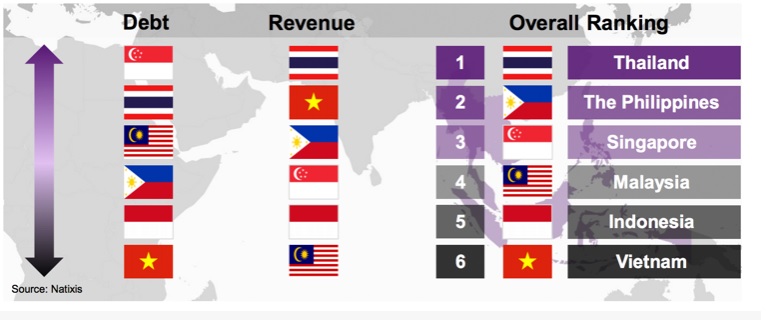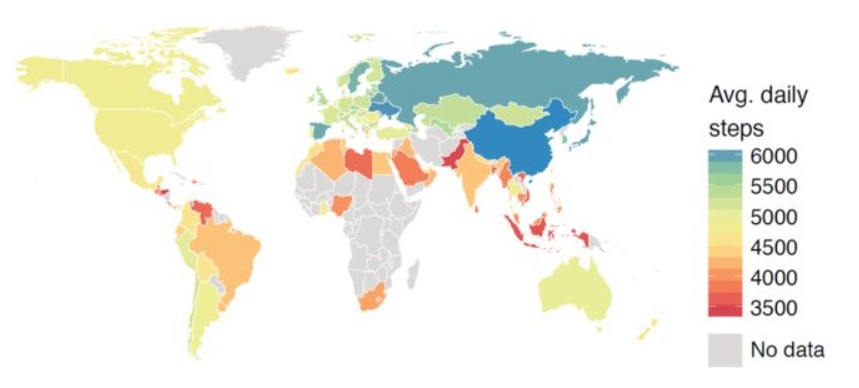Anti-Corruption in China, ASEAN Low Debt, Walking and Talking
Our cat’s allergies remind us this week what a strange and unfair universe we live in. Putter would very much like to go outside on a frequent basis. But it turns out he has allergies to innumerable plants and grass. When he goes out he becomes very sick and unhappy. But to remain inside makes him very sad. In this universe of ours, so much that is pleasurable is bad for you. I would like to think in some parallel universe dessert is healthy, whiskey makes you smarter and laying around on the couch watching sports is better for you than going to the gym. Alas we must play with the cards we are dealt (wait, gambling is bad for you too–perhaps this is related to Einstein and dice? Maybe at the quantum level eating French apple pie each morning for breakfast is good for you?). But we pleasurably inform you of the effects of China’s anti-corruption campaign, present the low debt of ASEAN countries and tell the tale of where people walk the most. It’s this week’s International Need to Know, the tasty, good for you dose of world knowledge.
Without further ado, here’s what you need to know.
Eeyore, Piglet and China’s Anti-Corruption Campaign
One of the many great unanswered questions about China while we await the fate of Winnie the Pooh, is whether President Xi’s anti-corruption campaign is about cracking down on corruption or consolidating power. For example, last week it was revealed that Sun Zhengcai, the former Communist Party chief of Chongqing, is under investigation. He was considered a rising star so perhaps (or perhaps not) he was a threat to President Xi’s power. Or maybe he was corrupt, or maybe both. Regardless of the whys of the anti-corruption program, what has been the effect on China’s economy from the anti-corruption crackdown? A new paper suggests it has lowered economic output. Two researchers examined a data set of visits to cities and provinces by the Provincial Committee of Discipline Inspection (PCDI–only a government, an ostensibly communist government, could come up with such names). The researchers looked at a bunch of different places the PCDI went to and instituted corruption crackdowns and then looked at corresponding car sales in those provinces: “We find that PCDI visits cause car sales to drop by 3.4% at the county level. The effect is surprisingly uniformly distributed across different price tiers. Luxury brands exhibit similar drops as domestic brands, suggesting corruption’s impact permeates a wide income spectrum. Over time, the effect is strengthening: We observe a 2% drop in the first three months of a PCDI visit, and a 10% drop one year afterwards.” So apparently the current corruption campaign is having negative effects on the economy. Who knows what banning Winnie the Pooh will do to the market?
ASEAN Countries Low Debt
We have remarked in the past on the high level of corporate debt in China, which given the outsized impact of state owned enterprises in China, is really government debt. Putting aside how much risk there is to the large levels of debt, we recently came across an article in Brink describing the low level of debt by comparison to countries in the Association of Southeast Asian Nations (ASEAN). “From the debt perspective, ASEAN corporate leverage is still very low, not only compared to China but to the rest of the world. Average corporate debt for the six largest ASEAN economies (Indonesia, Malaysia, Philippines, Singapore, Thailand and Vietnam) is barely 100 percent in terms of total liabilities-to-equity (versus 177 percent in China and 176 percent globally).” In terms of low level of debt, Thailand comes out best in the ASEAN countries while Vietnam ranks last. Of course, there are more factors than debt to consider when pondering a country’s economy and where to invest, export to or import from. Vietnam is in many ways a more dynamic economy than most. But if debt is your thing to worry about, than perhaps you head to Thailand.

Walking and Talking
One of the six largest letdowns of my lifetime was when the amazing new secret invention that was going to change our whole world turned out to be the Segway. You do remember the hype of this secret invention back in the late 1990s? When I see tourists wheeling around a city on a Segway, I wonder why they don’t just walk. So we read with interest an article in Nature about some enterprising Stanford researchers who used the accelerometers embedded in most cell phones to gain and analyze data on who is walking the most around the world. The researchers “analyzed the habits of 717,000 men and women from 111 countries, whose steps were studied for an average of 95 days.” Apparently 5.3 million people die from causes associated with physical inactivity each year (we type this sentence while sitting at a computer). The researchers are hoping to use the data to improve public health efforts by determining where inactivity is greatest, both in countries and cities. As it turns out, Hong Kong people walk the most. Indonesia is at the bottom of the rankings. Follow Aaron Sorkin’s example and walk and talk.



Leave a Reply
Want to join the discussion?Feel free to contribute!